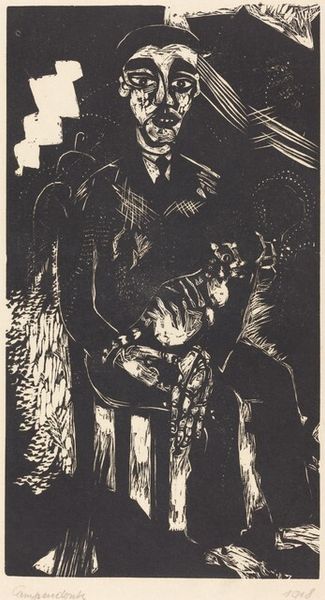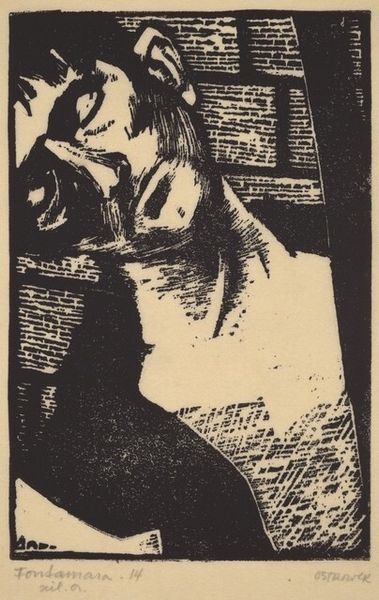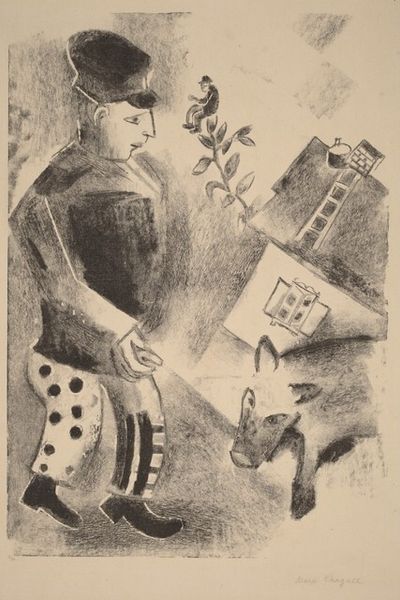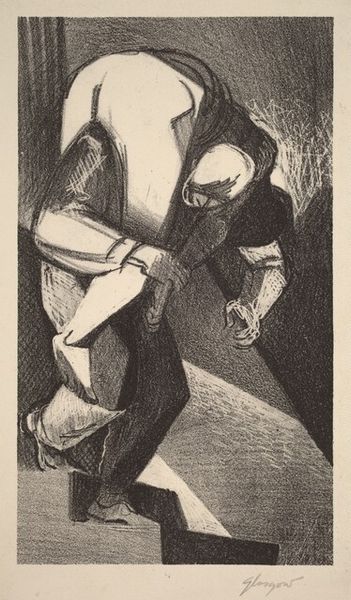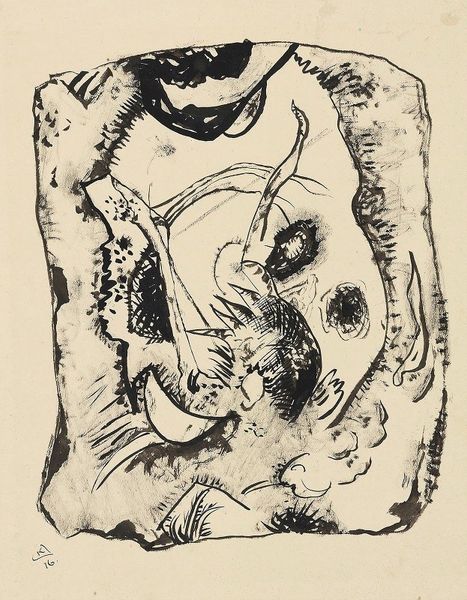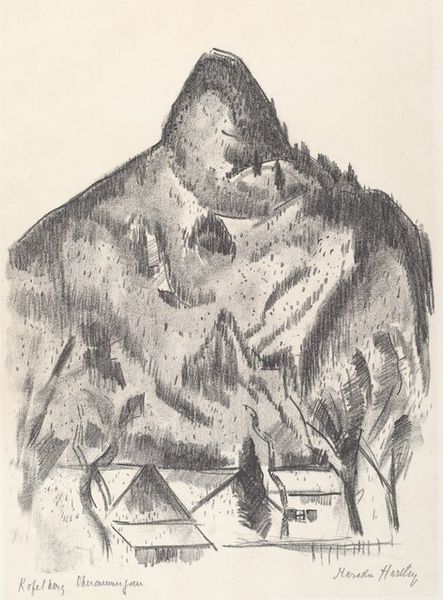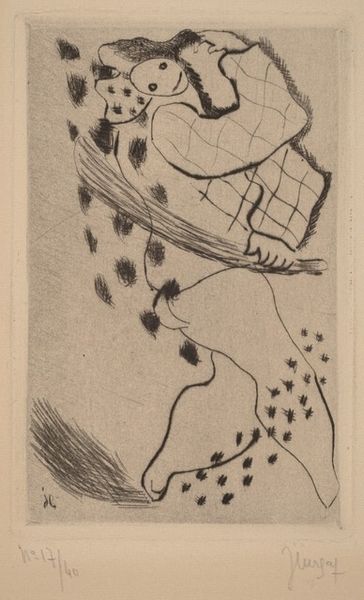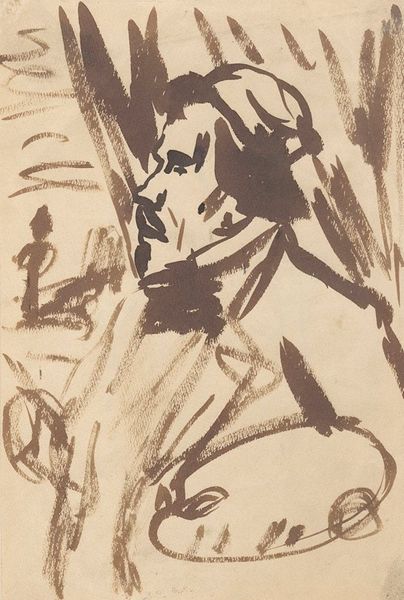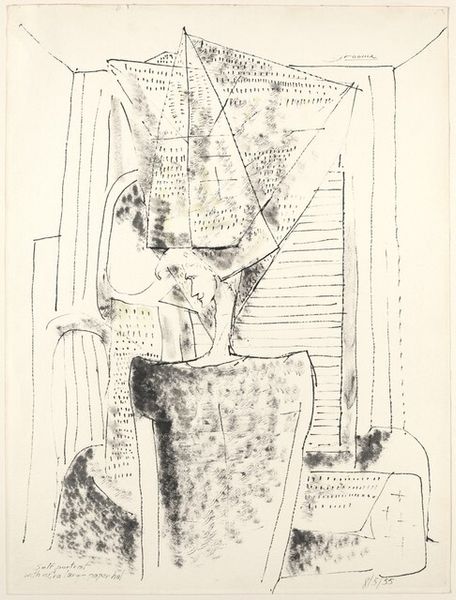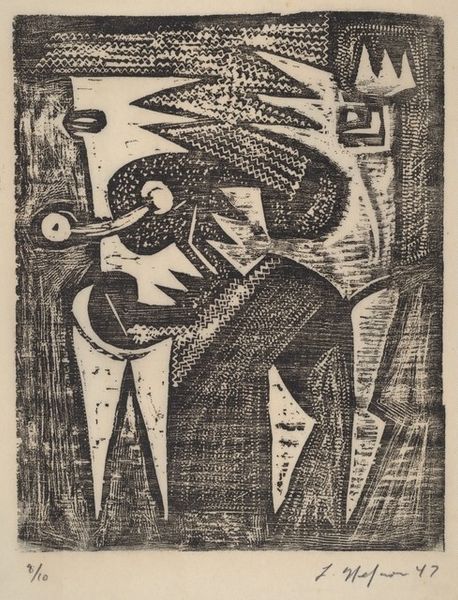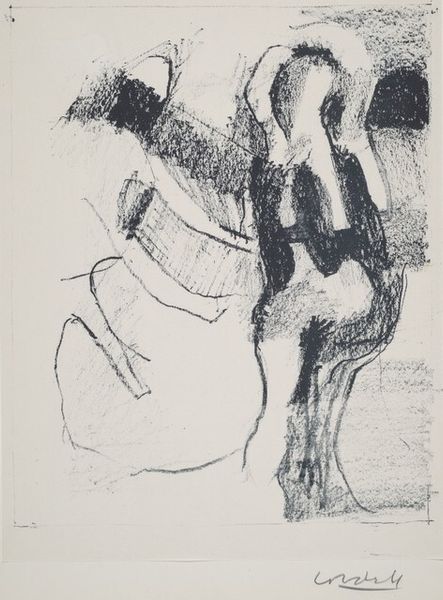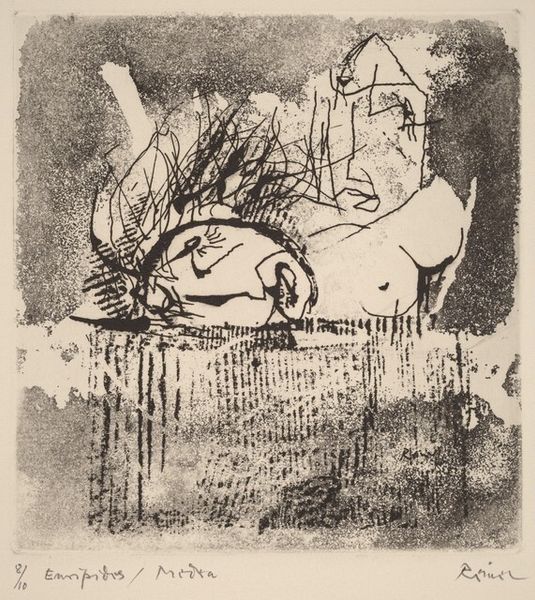
drawing, print, etching, ink
#
portrait
#
drawing
#
ink drawing
# print
#
etching
#
figuration
#
ink
#
erotic-art
Dimensions: image: 38.1 × 26.04 cm (15 × 10 1/4 in.) sheet: 47.94 × 32.54 cm (18 7/8 × 12 13/16 in.)
Copyright: National Gallery of Art: CC0 1.0
Curator: Before us is Walt Kuhn’s etching from around 1925, titled "Edith," a striking piece rendered in ink on paper. Editor: There's an immediate intimacy to it. The texture created by the etching captures this mood of vulnerability or quietude. She seems so exposed, literally and emotionally. Curator: Absolutely, and it’s vital to understand Kuhn’s involvement with avant-garde circles in New York at the time. These circles often explored themes of female representation, desire, and challenging bourgeois conventions, making "Edith" not just a portrait, but a deliberate commentary on shifting cultural attitudes. Editor: Looking at the lily pads scattered around, and then the patterned curtain hanging heavily to the left… the pads suggest purity, perhaps a reclamation, whereas that heavy curtain feels claustrophobic. It creates a powerful duality. Curator: I'd suggest looking closer at what seems to be painted or tattooed onto her body. The stars especially invoke a sense of celebrity, of agency. Are they markers of her self-fashioning within a particular subculture? I think there's more at play than vulnerability alone. It may suggest her participation in erotic communities. Editor: An interesting consideration, the role of body art as narrative! Thinking of archetypes, one cannot avoid thinking about pre-christian icons of feminine allure that echo down into contemporary media representations of gender. Curator: The male gaze here feels… complicated. It’s not simply objectifying, but attempting to understand. The woman becomes more than merely passive subject, she becomes an interlocutor. Editor: Yes, and thinking of symbols in her clothing, her adornments could reflect specific meanings from the artist or subculture's lexicon, influencing interpretations then versus our readings now. It becomes about tracing those coded signs. Curator: Exploring the history of female representation allows us to better assess the intent behind these kinds of representations—who creates these artworks, who do they depict, and whose interests do such images serve. Editor: "Edith" shows us how symbols live on, carrying weight and reflecting social moods of both the depicted world and the world perceiving it.
Comments
No comments
Be the first to comment and join the conversation on the ultimate creative platform.
